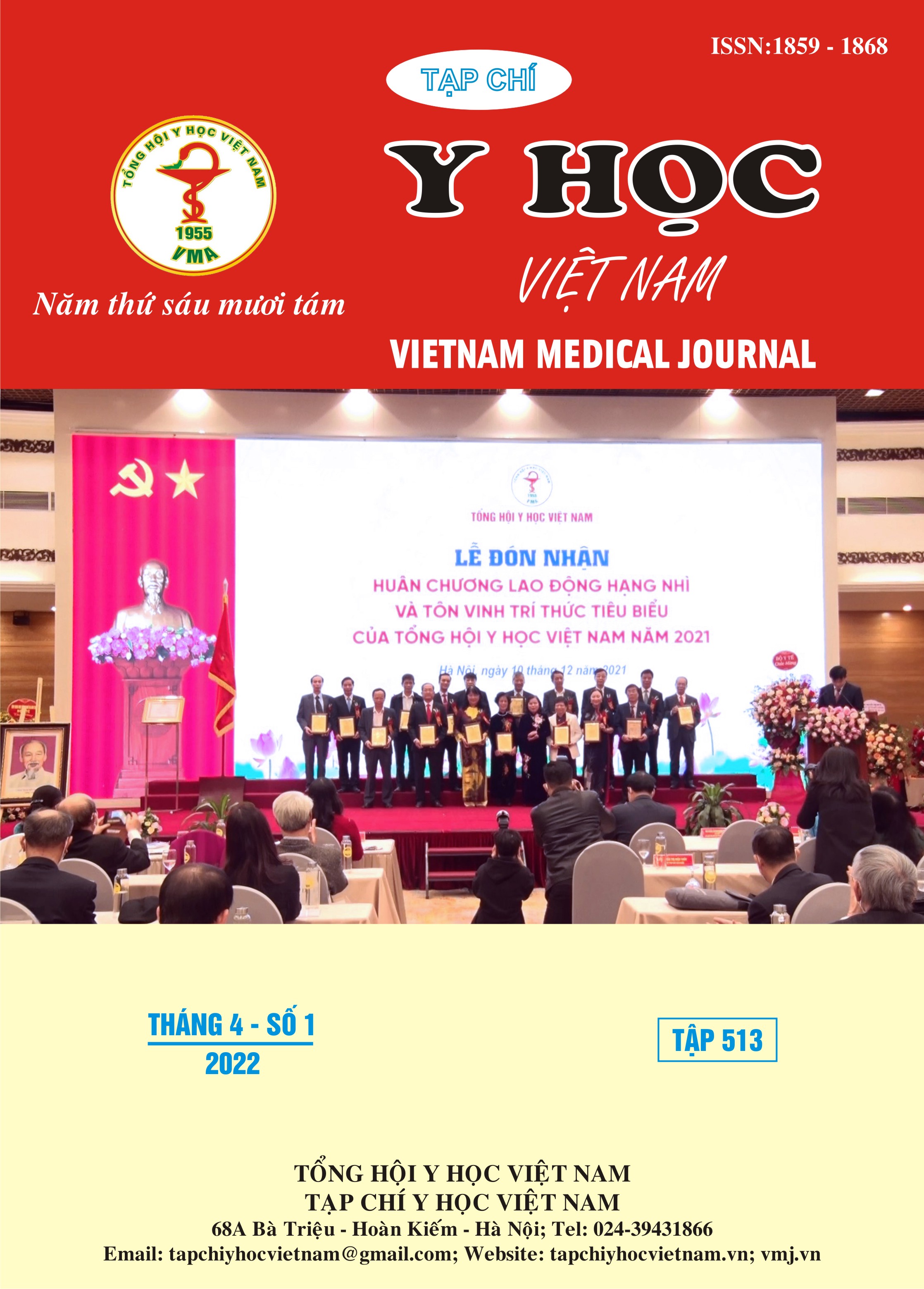PERCUTANEOUS INTERLAMINAR ENDOSCOPIC DECOMPRESSION FOR LUMBAR SPINAL STENOSIS AT VIET DUC UNIVERSITY HOSPITAL
Main Article Content
Abstract
Objective: In this report the author presents surgery-related outcomes after application of a new technique: Percutaneous interlaminar endoscopic decompression for lumbar spinal stenosis at Viet Duc university hospital. Methods: The records of 15 consecutive patients who underwent percutaneous interlaminar endoscopic decompression for lumbar spinal stenosis at Viet Duc university hospital from 09/2020 to 02/2021. Results: There were 15 cases (9 men, 6 women). Macnab outcome grade was good to excellent in 93.34% of patients. The average dural sac area (DSA) value was 75.65±30.32mm2 preoperative and DSA value was 101.89±42.68mm2 postoperative. Dural tear occurred in 1 case. Conclusions: The preliminary result of this Percutaneous interlaminar endoscopic decompression for lumbar spinal stenosis technique is encouraging and the procedure is safe. However, we need long-term follow-up and a more detailed study for more accurate results of this technique.
Article Details
Keywords
percutaneous interlaminar endoscopic, decompression, lumbar spinal stenosis
References
2. Verbiest, H.: A radicular syndrome from developmental narrowing of the lumbar vertebral canal. J. Bone Jt Surg. 36 B (1954) 230–237
3. Alvarez JA, Hardy RH (1998), “Lumbar spine stenosis: a common cause of back and leg paint” Am Fam Physician, 57: 1824-25, 1839-40.
4. Komp M, Hahn P, Oezdemir S, et al. Bilateral spinal decompression of lumbar central stenosis with the full-endoscopic interlaminar versus microsurgical laminotomy technique: a prospective, randomized, controlled study. Pain Physician 2015;18:61-70
5. Lee CW, Yoon KJ, Ha SS, et al. Foraminoplastic superior vertebral notch approach with reamers in percutaneous endoscopic lumbar discectomy: technical note and clinical outcome in limited indications of percutaneous endoscopic lumbar discectomy. J Korean Neurosurg Soc 2016;59:172-81
6. Ahn Y. Transforaminal percutaneous endoscopic lumbar discectomy: technical tips to prevent complications. Expert Rev Med Devices 2012;9:361-6
7. Hyeun Sung Kim1, Byapak Paudel1, Ji Soo Jang, Percutaneous Full Endoscopic Bilateral Lumbar Decompression of Spinal Stenosis Through Uniportal-Contralateral Approach: Techniques and Preliminary Results; World Neurosurgery 103: 201-209, JULY 2017.
8. David S. Rosen, M.D, John E. O’Toole, M.D, Minamally Invasive Lumbar Spinal Decompression In The Elderly: Outcomes Of 50 Patients Aged 75 Years And Older, Neurosurgery, Vol 60 | Number 3 | March 2007, 503-510
9. Young Uk Kim, Yu-Gyeong Kong, Clinical symptoms of lumbar spinal stenosis associated with morphological parameters on magnetic resonance images, Eur Spine J, 2015, DOI 10.1007/s00586-015-4197-2
10. Chul-Woo Lee, Kang-Jun Yoon, Sung-Won Kim, Percutaneous Endoscopic Decompression in Lumbar Canal and Lateral Recess Stenosis – Te Surgical Learning Curve, Neurospine 2019; 16(1): 63-71. https://doi.org/10.14245/ns.1938048.024


